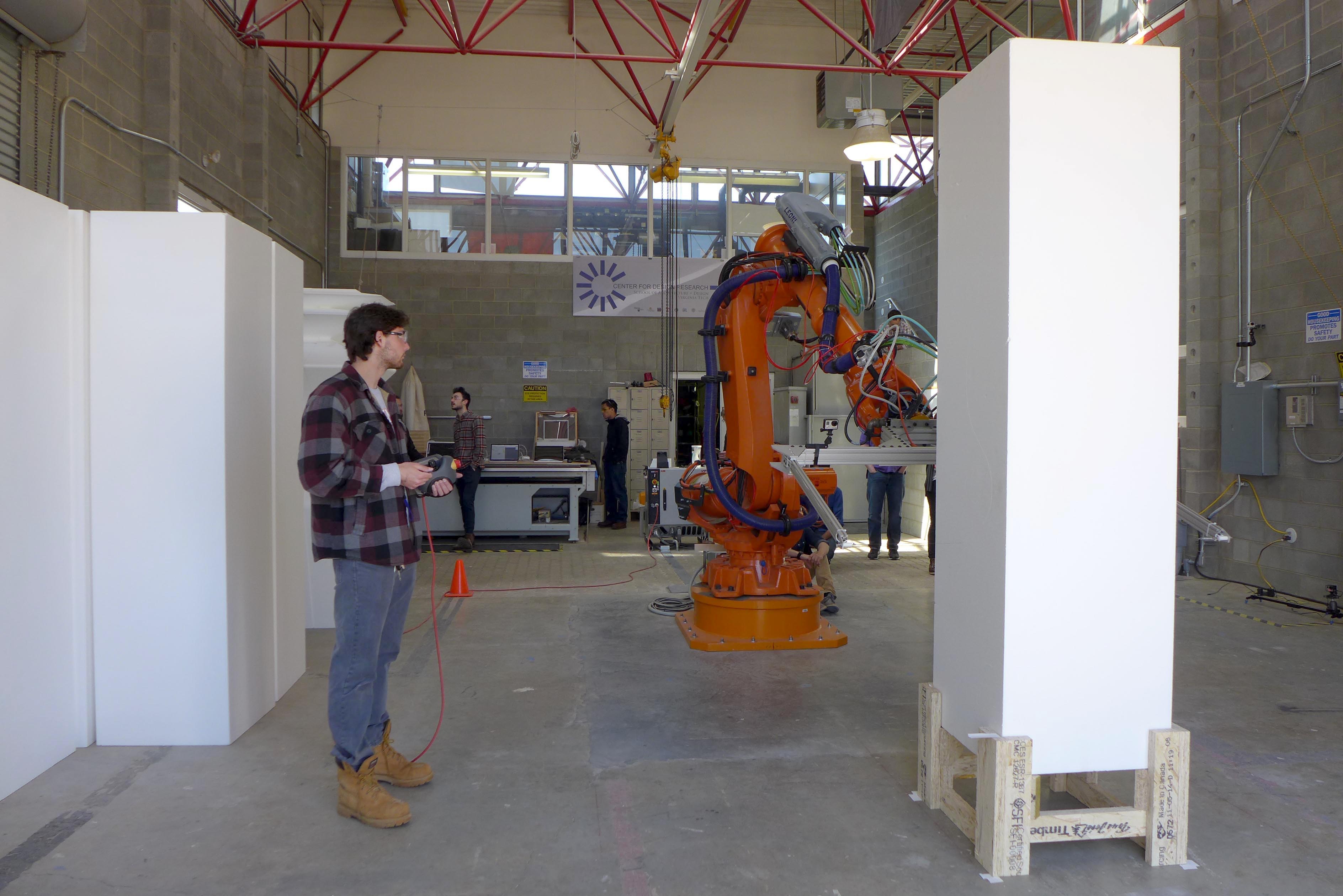Center for Design Research showcases new Design Robotics Studio through summit

Virginia Tech’s Center for Design Research provided an opportunity to advance the design robotics field by hosting the Design Robotics Summit at the College of Architecture and Urban Studies’ new Design Robotics Studio.
The summit included more than 60 students, faculty, and staff from colleges and universities including The University of Tennessee, Knoxville; University of Virginia; Randolph-Macon College; Columbia College of Chicago; and Rhode Island School of Design, as well as industry members from Autodesk and The Living.
The workshop's results will be presented at the May 16-19 International Contemporary Furniture Fair in New York City through the Center for Design Research's exhibition entitled “Material Transformations.”
Design robotics emerged in architecture, art, and design as a mode of inquiry focused on the investigation and understanding of digital fabrication and robotic technologies.
The Design Robotics Studio focuses on the development and deployment of innovative processes, systems, and solutions for both pedagogy and practice while providing a platform for collaborative research, development, and exploration.
In this vein, the Design Robotics Summit provided a vehicle for engagement with academic and industry partners to foster a conversation surrounding design technologies from multiple perspectives. The summit consisted of a series of tutorials, lectures, and hands-on creation using industrial robotic technology.
“Rather than present the digital design and robotics fabrication technologies as abstract technological novelties, this workshop expanded on well established pedagogical constructs centered about making and presenting the technology as a vehicle for exploration — for the sake of design, not for the sake of the tools themselves — an extension, not a replacement for traditional modes and methods,” said Nathan King, an assistant professor of architecture who is spearheading the School of Architecture + Design's design technology and robotics initiative.
The summit offered participants a two-day immersion into digital design-to-robotic fabrication, resulting in numerous physical prototypes. Each of the participants created something using the robot on the first day of the workshop, enabling an iterative prototyping process that allowed student groups to refine selected designs used in the production of large-scale sculptural elements the second day. Members of the Virginia Tech student group the Digital Mentorship Collaborative, along with students from current design robotics courses, participated as student instructors who offered supplemental instruction in computational design workflows.
This immersive experience provided participants the technical skills needed to begin to engage emerging design robotics initiatives at the participating universities.
The summit provided a platform for institutional capacity building by enabling digital fabrication coordinators from University of Virginia, University of Tennessee - Knoxville, and Virginia Tech an opportunity to work together on the development of workflows related to student access to robotic fabrication equipment. In addition to the three robots offered in the Design Robotics Studio, the Universities of Virginia and Tennessee brought their own machines — enabling the cross-pollination of knowledge that will facilitate the rapid adoption of the technologies at each respective school.
Beyond academic participation, a connection to design practice was established though industry engagement with Autodesk. During the summit, a team of Autodesk developers worked side-by-side with workshop co-chairs and students to develop an innovative design-to-robotic fabrication workflow using Autodesk’s Dynamo, an open source graphical programming interface that soon will interact with a number of Autodesk software platforms. This development resulted in the first physical artifact created from a direct Dynamo-to-robot workflow and will provide opportunities for the engagement of design robotics to a wide range of potential users.
“A goal of the Center for Design Research is to expand collaborative research projects within and beyond the boundaries of the university. This summit is a first step to jointly explore the evolving sphere of architecture and design education in the context of digital design and fabrication, and provide a working forum of interaction between the academy and profession,“ said Robert Dunay, director of the Center for Design Research.










